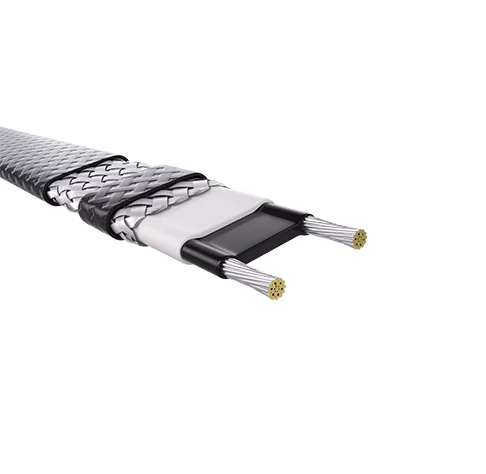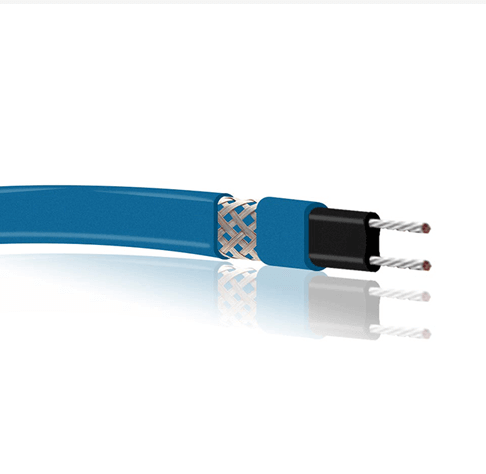Introduction
Welcome to your comprehensive guide to self-regulating heat cables, a game-changer in the world of home heating solutions. As an expert in the field with a Master's degree in Electrical Engineering from the University of California, Berkeley, I've dedicated years to understanding and utilizing this revolutionary technology. Let's dive into what it offers and how it can transform your home.
What is Self-Regulating Heat Cable?
Self-regulating heat cable is an innovative heating device that revolutionizes the way you approach warmth and comfort in your home. Unlike traditional heat cables, which operate at fixed temperatures, self-regulating cables adjust their output based on the surrounding temperature. This means they deliver heat precisely where and when needed, eliminating the risk of overheating or energy waste.
How does Self-Regulating Heat Cable Work?
The secret lies in the self-regulating polymer core of the cable. As the surrounding temperature drops, the polymer's resistance increases, allowing more current to flow and generating more heat. Conversely, as the temperature rises, the resistance decreases, reducing current and heat output. This allows the cable to maintain a consistent, optimal temperature throughout its length.
Section 1: Benefits of Self-Regulating Heat Cable
The benefits of self-regulating heat cables are numerous and compelling:
- Energy Efficiency: By regulating their heat output, self-regulating cables minimize energy consumption by only providing heat when and where necessary.
- Temperature Control: They maintain a constant, uniform temperature, eliminating hot spots and cold areas for optimal comfort.
- Safety: Their self-regulating nature prevents overheating, reducing the risk of fires or damage to cables or surfaces.
- Flexibility: Self-regulating cables can be easily cut to custom lengths, making them suitable for various applications and spaces.
- Durability: Manufactured using robust materials, these cables withstand harsh conditions and heavy use, ensuring longevity.
- Customization: With various power outputs and lengths available, you can tailor the system to meet your specific heating requirements.
- Ease of Installation: Self-regulating cables are user-friendly and can be easily installed by DIY enthusiasts or professionals.
- Versatile Applications: From melting snow and ice to preventing pipes from freezing, these cables offer a wide range of uses.
Section 2: Applications of Self-Regulating Heat Cable
The versatility of self-regulating heat cables makes them ideal for various applications:
- Roof and gutter de-icing
- Pipe freeze protection
- Driveway and walkway heating
- Basement and crawlspace heating
- Livestock watering systems
Section 3: How to Choose the Right Self-Regulating Heat Cable
Selecting the appropriate self-regulating heat cable depends on several factors:
- Length: Determine the required length for your application.
- Power Output: Consider the heating needs of the area you want to warm.
- Area of Application: Choose a cable designed for the specific surface (e.g., roof, pipe, walkway).
- Climate: Consider the severity of winter conditions in your location.
China's high-quality Self-Regulating Heat Cable supplier
If you want to get high-quality Self-Regulating Heat Cable, but don't know how to choose, you might as well try jiahong. As a professional Self-Regulating Heat Cable supplier, jiahong can provide you with high-quality products and services. Welcome to contact us for detailed ordering information!
Section 4: Installation of Self-Regulating Heat Cable
Installing self-regulating heat cables involves following a few simple steps:
- Clean the surface where the cable will be placed.
- Secure the cable using adhesive tape or clips.
- Install the thermostat (if required) to control the temperature.
- Cover the cable with insulation or protective material.
- Connect the cable to a power source.
Section 5: Maintenance of Self-Regulating Heat Cable
Maintaining self-regulating heat cables is straightforward:
- Regular Inspection: Periodically check the cable for any damage or wear.
- Cleaning: Keep the cable clean by brushing away dirt or debris.
- Testing: Occasionally test the cable's functionality by turning it on and off.
Section 6: Cost and ROI of Self-Regulating Heat Cable
While self-regulating heat cables may have a higher initial cost compared to traditional heat cables, their energy efficiency and long lifespan lead to significant savings over time. Additionally, they can prevent costly damage caused by frozen pipes, slippery driveways, or roof ice dams, making them a valuable investment.
Section 7: Safety Precautions
When using self-regulating heat cables, always adhere to these safety precautions:
- Read and follow the manufacturer's instructions carefully.
- Wear gloves and safety glasses during installation and maintenance.
- Ensure the cable is properly grounded.
- Keep the cable away from flammable materials.
- Do not cut or splice the cable while it's energized.
Section 8: Success Stories
Case Study 1: A homeowner used self-regulating heat cables to prevent pipes from freezing in their unheated garage during a severe winter storm. The pipes remained protected, saving them from costly repairs.
Case Study 2: A commercial building owner installed self-regulating heat cables in the roof gutters to prevent ice dams from forming. The system effectively melted snow and ice, eliminating the risk of water damage to the building.
Case Study 3: A farmer utilized self-regulating heat cables to provide a warm water source for their livestock during the cold winter months. The cables kept the water tanks ice-free, ensuring the well-being of the animals.
Section 9: Tips for Using Self-Regulating Heat Cable
- Use a thermostat to control the temperature and avoid overheating.
- Avoid crossing or overlapping the cables to prevent overheating.
- Insulate the heated area to improve energy efficiency.
- Consider using a timer to turn the system on and off automatically.
- Consult an electrician for complex installations or if you're unsure.
Section 10: Frequently Asked Questions (FAQs)
Q: Are self-regulating heat cables safe? A: Yes, self-regulating heat cables are safe when used according to the manufacturer's instructions and safety precautions.
Q: How long do self-regulating heat cables last? A: Self-regulating heat cables typically have a lifespan of 10-15 years or more when properly installed and maintained.
Q: Can I install self-regulating heat cables on my own? A: While they are user-friendly, it's recommended to consult an electrician for complex installations or if you're unsure of the process.
Table 1: Self-Regulating Heat Cable Energy Consumption
| Application | Energy Consumption (kWh/ft) |
|---|---|
| Roof De-Icing | 0.05-0.15 |
| Pipe Freeze Protection | 0.02-0.08 |
| Driveway Heating | 0.10-0.20 |
Table 2: Self-Regulating Heat Cable Wattage Guide
| Area to be Heated | Wattage per Square Foot |
|---|---|
| Roofs | 3-5 |
| Gutters | 5-10 |
| Pipes | 2-4 |
| Walkways and Driveways | 15-25 |
Call to Action:
Transform your home into a haven of comfort and efficiency with self-regulating heat cables. Visit our website or contact our experts today to find the perfect solution for your needs. Experience the warmth and convenience like never before!



